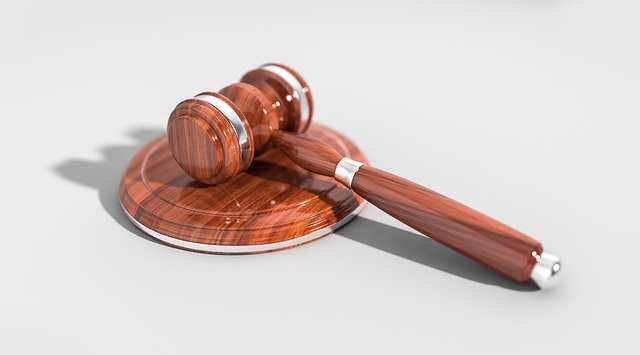Chapter 13 Bankruptcy Rules: 10 Rules To Know Before You File

Filing for a chapter 13 bankruptcy can be very complicated. In fact, the chapter 13 bankruptcy rules change on an annual basis.
Chapter 13 bankruptcy is known as the wage earners bankruptcy plan since it gives people who earn a regular paycheck to put together a plan and pay off their debts.
It’s also important to have an attorney, such as one of these Chapter 13 Bankruptcy Lawyers Milwaukee, on hand that can help you through this complex process as well.
However, the rules for a chapter 13 bankruptcy can be a bit confusing and in this article, I’m going to cover 10 different rules you will want to know about before you file.
1. Who Can File
The first thing you need to know about the chapter 13 bankruptcy rules is that not just anyone can file for this.
First off, only an individual or a self-employed person can file for this type of bankruptcy. This means that corporations or partnerships cannot file using chapter 13.
2. How Much Debt Do You Have
Next in order to file you cannot have too much debt. Under the rules of chapter 13 bankruptcy, you cannot have more than $360,475 of unsecured debt. These would be debts like credit cards, medical bills, or anything that is not backed by a physical asset.
As far as secured debts go you are not allowed to file with more than $1,081,400. These would be debts that are backed by a physical asset like your mortgage or car loan. Also, know that these numbers can change over time and are based on the consumer price index.
3. Did You Attend Credit Counseling Classes
In order to file for bankruptcy, the law now states that you must attend certified credit counseling classes either one on one or in a group session.
This can only be done 180 days prior to filing for bankruptcy or it won’t count and you will have to see another credit counselor.
4. The 180-Day Rule
The fourth chapter 13 bankruptcy rule you need to know about is the 180-day rule.
This rule states that you cannot file for bankruptcy in the preceding 180 days if you failed to show for court in a previous bankruptcy hearing, comply with court orders, or if you were dismissed because one of the creditors was filing bankruptcy to recover an asset from you such as your home or car.
5. No More Debt Allowed
Next, once you have filed for bankruptcy and the repayment plan has been filed you will no longer be allowed to acquire more debt to your name until the payment plan is complete.
In fact, you will not be allowed to get a car loan or even a home loan. If you do somehow acquire more debt it could be a breach of the bankruptcy plan.
6. How Funds Will Be Paid
Next payments will be deducted through your payroll at your place of work and given to the bankruptcy trustee who will then disburse the fund accordingly.
If you fail to comply with the courts they could dismiss the case and they could file to liquidate your assets.
7. You Must Make Home Payments On Time
One benefit to a chapter 13 bankruptcy is that you could use it as a way to stop home foreclosure.
However, if you’re thinking you will get away with paying less on your home by going this route think again.
In order to avoid foreclosure completely, you will have to still make the monthly payments as written in the repayment plan or you will still be at risk of losing your home.
8. How Much Time You Have To Pay Up
Eighth, when it comes to paying your bankruptcy debts you will only have a certain amount of time to pay them back.
If you earn less than the state’s medium income you will have to pay your debts back in 3 years or less. If you earn more than the state medium income you will have to pay the debts back in 5 years or less.
However, no plan shall last longer than 5 years.
9. Court Charges
Ninth, in order to file for bankruptcy you will have to pay a fee that goes to the courts.
The first fee is a case filing fee that will cost $235 and the second fee is a $39 miscellaneous administrative fee, totaling all together $274.
These fees can be paid in 4 installment payments and can take no longer than 120 days, however, you can file an extension for an additional 60 days in some cases.
10. Repayment Plan Guidelines
Finally, the last chapter 13 bankruptcy rule that you should know about is the repayment guidelines.
Under the current bankruptcy rules, you must file a repayment plan within the first 15 days when filing for a chapter 13 bankruptcy. Depending on the person’s situation they may grant an extension if necessary.
Finally, to close this article these are only just a few of the rules that go along with the chapter 13 bankruptcy rules. To learn more about this option contact your attorney and they will be able to give you more information.







I filed chapter 13 November 2016, and I am still on it, but due to family emergency I fell behind on my payment, and there will be a motion to dismiss hearing on June of this year, in positive side my attorney is trying to help me a lot to not to be on that situation, But they needed more document from me due to my domestic partner income and share plus the $$ that I am behind and when and how I will be able to cover all the behind payment, my attorney told me I have two days to provide all those so they can present that to the trustee before June 2017, I am worried that if I make payment and the trustee still decided to dismiss my case I will loose some of the money I made, i need help and good advice, should i continue and send $2000.00 for the money that i am behind or should i let it dismiss and file another one after 180 days and at least i have the all the document and money to show for payment plan. please advise.